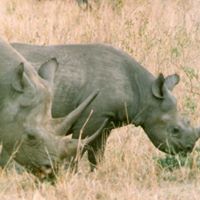How long can the Six-Eyed Sand Spider survive without food or drink?
The Six-Eyed Sand Spider (Sicarius hahni) is a medium-sized spider with a body measuring 8 to 15 mm and legs spanning up to 50 mm. It is found in deserts and other sandy places in southern Africa. It is a member of the Sicariidae family; close relatives may be found in both Africa and in South America, and its near cousins, the recluses (Loxosceles), are found worldwide. Due to its flattened stance and laterigrade legs, it is also sometimes known as the six-eyed crab spider. Bites by Sicarius to humans are uncommon; there are no proven cases and only two suspected cases where the culprit was never identified. Sicarius bites have been experimentally shown as lethal to rabbits within 5 to 12 hours. The genus name Sicarius is Latin for 'murderer', from sica, a curved dagger. The species was named after Carl Wilhelm Hahn.
This spider buries itself in the sand and strikes from ambush at prey that wanders too closely. Sand particles adhere to cuticles on its abdomen, thus acting as a natural camouflage if uncovered. If disturbed, it will run a short distance and bury itself again. On top of this it can survive a year without a meal or even a drop to drink, making it a patient hunter.
Toxicology studies have demonstrated that the venom is particularly potent, with a powerful hemolytic/necrotoxic effect, causing blood vessel leakage, thinning of the blood and tissue destruction. No anti-venom exists for it.
More Info:
en.wikipedia.org









